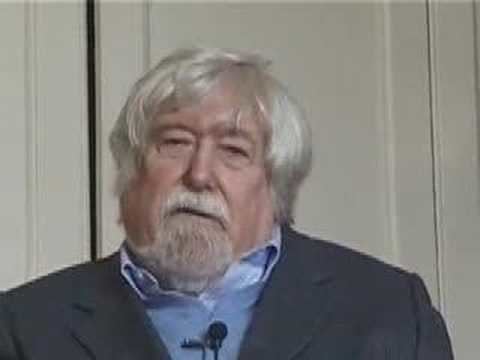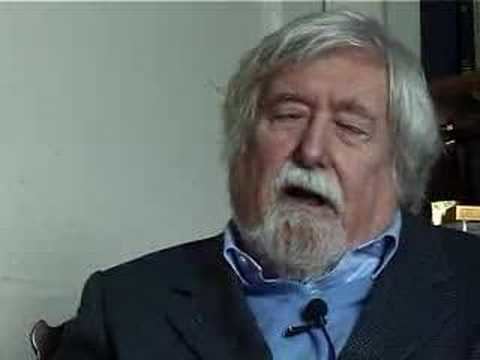Nationality American Role Anthropologist Name Clifford Geertz | Fields Anthropology | |
 | ||
Born August 23, 1926San Francisco, California ( 1926-08-23 ) Doctoral students James Siegel, James Boon, Lawrence Rosen, Abdellah Hammoudi, Sherry Ortner, Paul Rabinow, David Szanton Died October 30, 2006, Philadelphia, Pennsylvania, United States Parents Clifford James Geertz, Lois Brieger-Geertz Books The Interpretation of Cultures, Local Knowledge, Agricultural Involution, The Religion of Java, Available Light Similar People Max Weber, Paul Rabinow, Sherry Ortner, Talcott Parsons, Fred Saberhagen | ||
Full interview with clifford geertz part one
Clifford James Geertz (; August 23, 1926 – October 30, 2006) was an American anthropologist who is remembered mostly for his strong support for and influence on the practice of symbolic anthropology, and who was considered "for three decades...the single most influential cultural anthropologist in the United States." He served until his death as professor emeritus at the Institute for Advanced Study, Princeton.
Contents
- Full interview with clifford geertz part one
- 10f seven classic theories of religion clifford geertz
- Early life
- Teaching
- Later life
- Main ideas and contributions
- Philosophical influences
- Legacy
- Interlocutors
- Major publications
- Chronological list of works by Clifford Geertz
- Honors
- References

10f seven classic theories of religion clifford geertz
Early life
Geertz was born in San Francisco on August 23, 1926. After service in the US Navy in World War II (1943–45), Geertz received his B.A. in philosophy from Antioch College in 1950. After graduating from Antioch he attended Harvard University from which he graduated in 1956, as a student in the Department of Social Relations. This interdisciplinary program was led by Talcott Parsons, and Geertz worked with both Parsons and Clyde Kluckhohn. Geertz was trained as an anthropologist, and conducted his first long-term fieldwork, together with his wife, Hildred, in Java, which was funded by the Ford Foundation and MIT. He studied the religious life of a small, upcountry town for 2.5 years, living with a railroad labourer's family. After finishing his thesis, Geertz returned to Bali and Sumatra. He earned his Ph.D. in 1956 with a dissertation entitled Religion in Modjokuto: A Study of Ritual Belief In A Complex Society.
Teaching
He taught or held fellowships at a number of schools before joining the faculty of the anthropology department at the University of Chicago in 1960. In this period Geertz expanded his focus on Indonesia to include both Java and Bali and produced three books, including Religion of Java (1960), Agricultural Involution (1963), and Peddlers and Princes (also 1963). In the mid-1960s, he shifted course and began a new research project in Morocco that resulted in several publications, including Islam Observed (1968), which compared Indonesia and Morocco.
In 1970, Geertz left Chicago to become professor of social science at the Institute for Advanced Study in Princeton, New Jersey from 1970 to 2000, then as emeritus professor. In 1973, he published The Interpretation of Cultures, which collected essays Geertz had published throughout the 1960s. That became Geertz's best-known book and established him not just as an Indonesianist but also as an anthropological theorist. In 1974, he edited the anthology Myth, Symbol, Culture that contained papers by many important anthropologists on symbolic anthropology. Geertz produced ethnographic pieces in this period, such as Kinship in Bali (1975), Meaning and Order in Moroccan Society (1978, written collaboratively with Hildred Geertz and Lawrence Rosen) and Negara (1981).
Later life
From the 1980s to his death, Geertz wrote more theoretical and essayistic pieces, including book reviews for the New York Review of Books. As a result, most of his books of the period are collections of essays, including Local Knowledge (1983), Available Light (2000) and Life Among The Anthros (published posthumously in 2010). He also produced the autobiographical After The Fact (1995) and Works and Lives (1988), a series of short essays on the stylistics of ethnography.
Geertz received Honorary Doctorate Degrees from some fifteen colleges and universities, including Harvard University, the University of Chicago and the University of Cambridge. He was married first to the anthropologist Hildred Geertz. After their divorce, he married Karen Blu, also an anthropologist. Clifford Geertz died of complications following heart surgery on October 30, 2006.
Geertz conducted extensive ethnographical research in Southeast Asia and North Africa. This fieldwork was the basis of Geertz's famous analysis of the Balinese cockfight among others. He was the director of the multidisciplinary project Committee for the Comparative Studies of New Nations while he held a position in Chicago in the 1960s. He conducted fieldwork in Morocco as part of this project on "bazaars, mosques, olive growing and oral poetry". The ethnographic data for the famous essay on thick description was collected here. He contributed to social and cultural theory and is still influential in turning anthropology toward a concern with the frames of meaning within which various peoples live their lives. He reflected on the basic core notions of anthropology, such as culture and ethnography. At the time of his death, Geertz was working on the general question of ethnic diversity and its implications in the modern world.
Main ideas and contributions
At the University of Chicago, Geertz became a champion of symbolic anthropology, a framework which gives prime attention to the role of symbols in constructing public meaning. In his seminal work The Interpretation of Cultures (1973), Geertz outlined culture as "a system of inherited conceptions expressed in symbolic forms by means of which men communicate, perpetuate, and develop their knowledge about and attitudes toward life."
He was one of the earliest scholars to see that the insights provided by common language, philosophy and literary analysis could have major explanatory force in the social sciences. Geertz aimed to provide the social sciences with an understanding and appreciation of “thick description.” Geertz applied thick description to anthropological studies (specifically his own 'interpretive anthropology'), while producing theory that had implications for other social sciences. For example, Geertz asserted that culture was essentially semiotic in nature, and this theory has implications for comparative political sciences.
Max Weber and his interpretative social science are strongly present in Geertz’s work. Geertz himself argues for a “semiotic” concept of culture: “Believing, with Max Weber, that man is an animal suspended in webs of significance he himself has spun," he states, “I take culture to be those webs, and the analysis of it to be therefore not an experimental science in search of law but an interpretative one in search of meaning. It is explication I am after, construing social expression on their surface enigmatical.”
Geertz argues that to interpret a culture’s web of symbols, scholars must first isolate its elements, specifying the internal relationships among those elements and characterize the whole system in some general way according to the core symbols around which it is organized, the underlying structures of which it is a surface expression, or the ideological principles upon which it is based. It was his view that culture is public, because “meaning is,” and systems of meanings are what produce culture, because they are the collective property of a particular people. We cannot discover the culture’s import or understand its systems of meaning, when, as Wittgenstein noted, “we cannot find our feet with them.” Geertz wants society to appreciate that social actions are larger than themselves; they speak to larger issues, and vice versa, because “they are made to.”
It is not against a body of uninterrupted data, radically thinned descriptions, that we must measure the cogency of our explications, but against the power of the scientific imagination to bring us into touch with the lives of strangers.”
In seeking to converse with subjects in foreign cultures and gain access to their conceptual world, this is the goal of the semiotic approach to culture. Cultural theory is not its own master; at the end of the day we must appreciate, that the generality “thick description” contrives to achieve, grows out of the delicacy of its distinctions, not the sweep of its abstraction. The essential task of theory-building here is not to codify abstract regularities, but to make thick description possible; not to generalize across cases, but to generalize within them.
His often-cited essay "Deep Play: Notes on the Balinese Cockfight" is the classic example of thick description, a concept adopted from the British philosopher Gilbert Ryle. Thick description is an anthropological method of explaining with as much detail as possible the reason behind human actions. Many human actions can mean many different things, and Geertz insisted that the anthropologist needs to be aware of this. The work proved influential amongst historians, many of whom tried to use these ideas about the 'meaning' of cultural practice in the study of customs and traditions of the past.
During Geertz's long career he worked through a variety of theoretical phases and schools of thought. In his essay "Ethos, Worldview and the Analysis of Sacred Symbols," published in his 1973 book The Interpretation of Cultures, Geertz wrote that "The drive to make sense out of experience, to give it form and order, is evidently as real and pressing as the more familiar biological needs...", a statement that reflects an early leaning toward functionalism.
Philosophical influences
Geertz used the concept of thick description from Gilbert Ryle, which comes from ordinary language philosophy. He also used the concept of family resemblances into anthropology from the post-analytic philosophy of Ludwig Wittgenstein.
He also introduced Alfred Schütz's "...distinctions among predecessors, consociates, contemporaries and successors, distinctions that have become commonplace in anthropology" in his wake. Geertz stressed how the links between "consociate-contemporary-predecessor-successor" derive from the "Umwelt - Mitwelt - Vorwelt - Folgewelt" formulation of Schütz's phenomenology.
Legacy
Geertz's research and ideas had a strong influence on 20th century academia, including modern anthropology and communication studies, and for geographers, ecologists, political scientists, scholars of religion, historians, and other humanists.
University of Miami Professor Daniel Pals wrote of Geertz in 1996, "His critics are few; his admirers legion." Talal Asad attacked the dualism in Geertzian theory: the theory does not provide a bridge between external symbols and internal dispositions. He also pointed out the need for a more nuanced approach toward the historical background of certain concepts. Criticizing Geertz's theory of religion in general he pointed out a gap between 'cultural system' and 'social reality' when attempting to define the concept of religion in universal terms.
Interlocutors
Major publications
Chronological list of works by Clifford Geertz
The four studies included in the book are:
